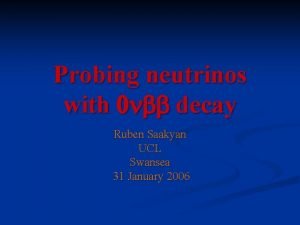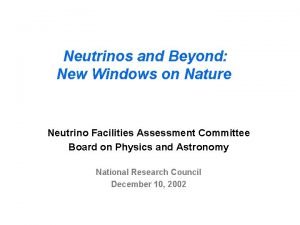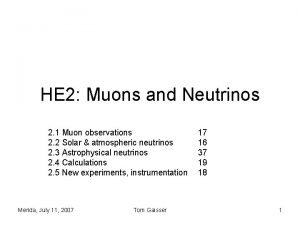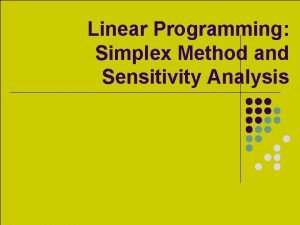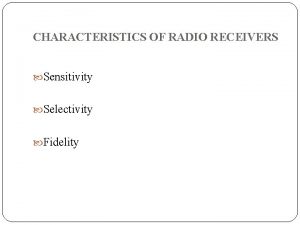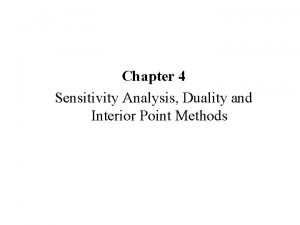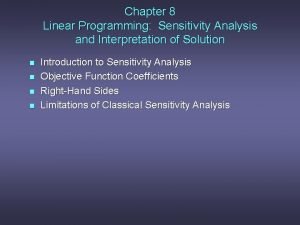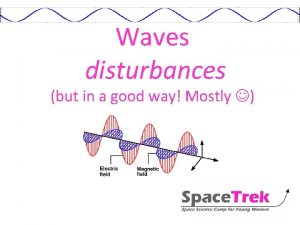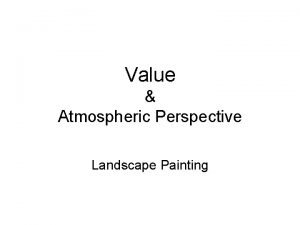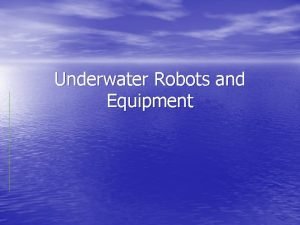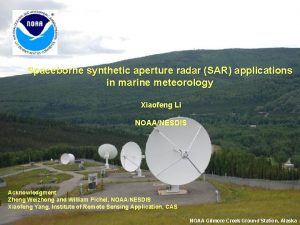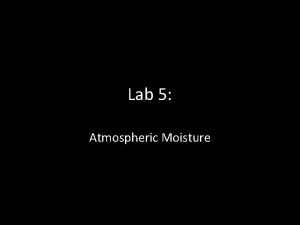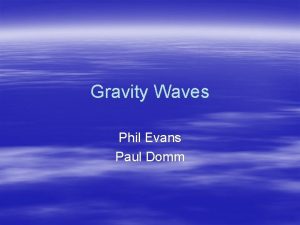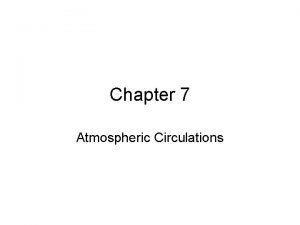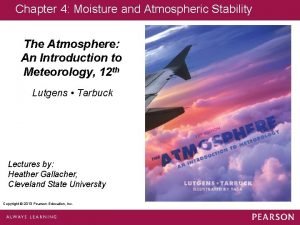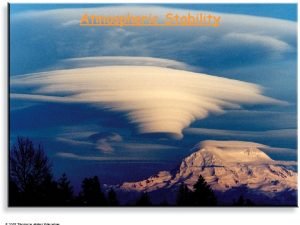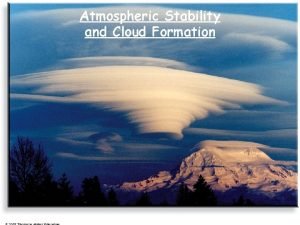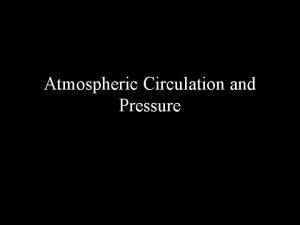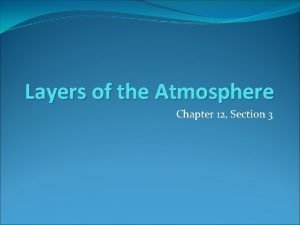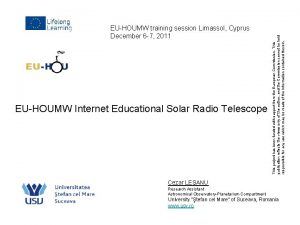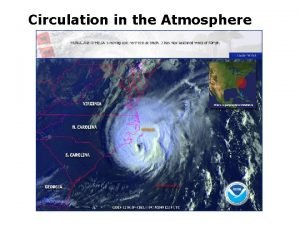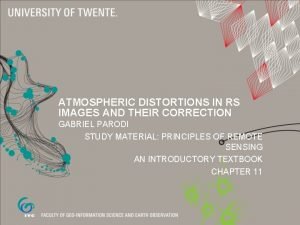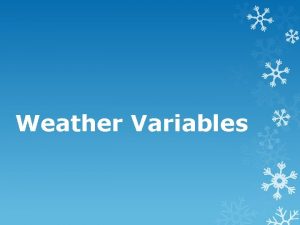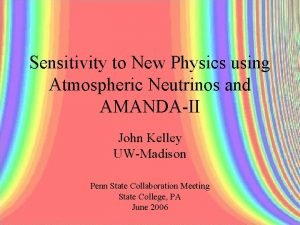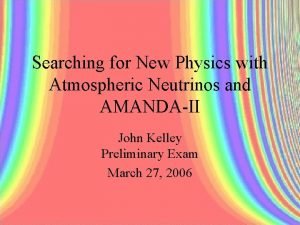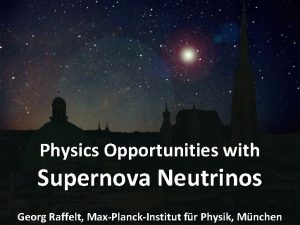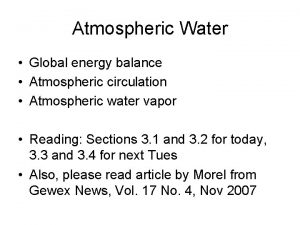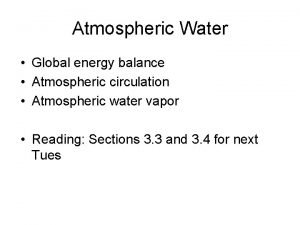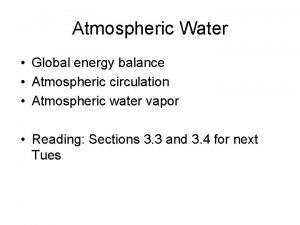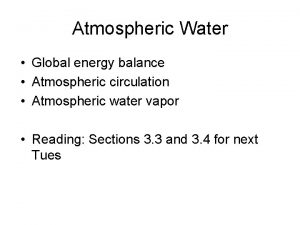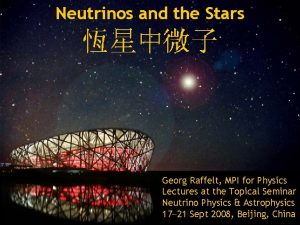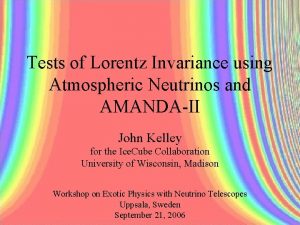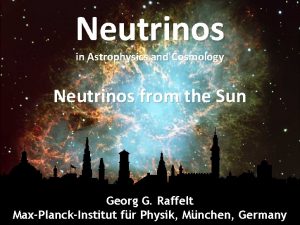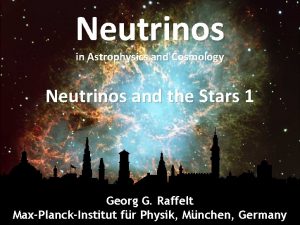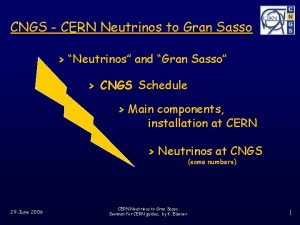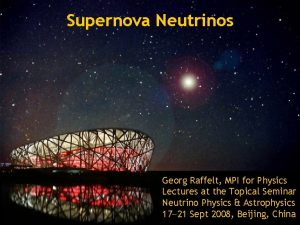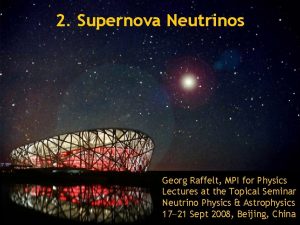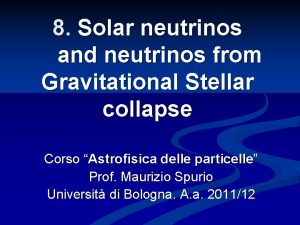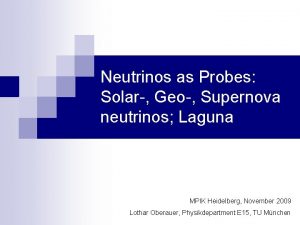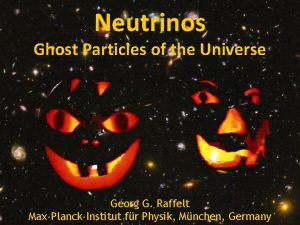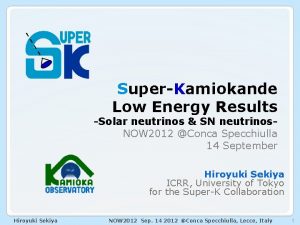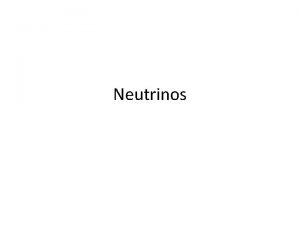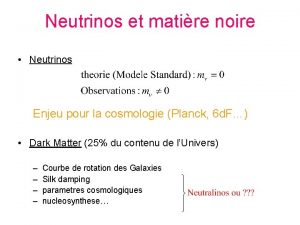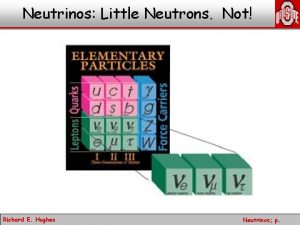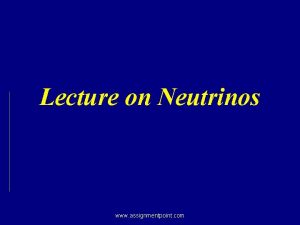Sensitivity to New Physics using Atmospheric Neutrinos and





























- Slides: 29

Sensitivity to New Physics using Atmospheric Neutrinos and AMANDA-II John Kelley UW-Madison Ice. Cube Collaboration Meeting Baton Rouge, LA April 10, 2006

Oscillations: Particle Physics with Atmospheric Neutrinos • Evidence (Super. K, SNO, Kam. LAND, MINOS, etc. ) that neutrinos oscillate flavors (hep-ex/9807003) • Mass-induced oscillations now the accepted explanation • Small differences in energy cause large observable effects! Figures from Los Alamos Science 25 (1997)

Atmospheric Oscillations • Direction of neutrino (zenith angle) corresponds to different propagation baselines L L ~ O(104 km) L ~ O(102 km) Oscillation probability:

Super. K, hep-ex/0404034 Experimental Results atmospheric Global oscillation fits (Maltoni et al. , hep-ph/0405172)

Neutrinos as a New Physics Probe • Neutrinos are already post-Standard Model (massive) • For E > 100 Ge. V and m < 1 e. V*, Lorentz > 1011 • Oscillations are a sensitive quantum-mechanical probe Eidelman et al. : “It would be surprising if further surprises were not in store…” * From cosmological data, mi < 0. 5 e. V, Goobar et. al, astro-ph/0602155

New Physics Effects • Violation of Lorentz invariance (VLI) in string theory or loop quantum gravity* c - 1 c - 2 • Violations of the equivalence principle (different gravitational coupling)† • Interaction of particles with spacetime foam quantum decoherence of pure states‡ * see e. g. Carroll et al. , PRL 87 14 (2001), Colladay and Kostelecký, PRD 58 116002 (1998) † see e. g. Gasperini, PRD 39 3606 (1989) ‡ see e. g. Hawking, Commun. Math. Phys. 87 (1982), Ellis et al. , Nucl. Phys. B 241 (1984)

VLI Phenomenology • Modification of dispersion relation*: • Different maximum attainable velocities ca (MAVs) for different particles: E ~ ( c/c)E • For neutrinos: MAV eigenstates not necessarily flavor or mass eigenstates * Glashow and Coleman, PRD 59 116008 (1999)

VLI Oscillations Gonzalez-Garcia, Halzen, and Maltoni, hep-ph/0502223 • For atmospheric , conventional oscillations turn off above ~50 Ge. V (L/E dependence) • VLI oscillations turn on at high energy (L E dependence), depending on size of c/c, and distort the zenith angle / energy spectrum

Survival Probability c/c = 10 -27

Quantum Decoherence Phenomenology • Modify propagation through density matrix formalism: dissipative term • Solve DEs for neutrino system, get oscillation probability*: *for more details, please see Morgan et al. , astro-ph/0412628

QD Parameters • Various proposals for how parameters depend on energy: simplest preserves Lorentz invariance recoiling D-branes!

Survival Probability ( model) a= = 4 10 -32 (E 2 / 2)

Data Sample 2000 -2003 sky map Livetime: 807 days 3329 events (up-going) <5% fake events No point sources found: pure atmospheric sample! Adding 2004, 2005 data: > 5000 events (before cut optimization)

Analysis Or, how to extract the physics from the data? detector MC …only in a perfect world!

Observable Space c/c = 10 -25 No New Physics

Binned Likelihood Test Poisson probability Product over bins Test Statistic: LLH

Testing the Parameter Space c/c excluded allowed sin(2 ) Given a measurement, want to determine values of parameters { i} that are allowed / excluded at some confidence level

Feldman-Cousins Recipe • For each point in parameter space { i}, sample many times from parent Monte Carlo distribution (MC “experiments”) • For each MC experiment, calculate likelihood ratio: L = LLH at parent { i} - minimum LLH at some { i, best} • For each point { i}, find Lcrit at which, say, 90% of the MC experiments have a lower L (FC ordering principle) • Once you have the data, compare Ldata to Lcrit at each point to determine exclusion region • Primary advantage over 2 global scan technique: proper coverage Feldman & Cousins, PRD 57 7 (1998)

1 -D Examples sin(2 ) = 1 all normalized to data

VLI Sensitivity: Zenith Angle 2000 -05 livetime simulated (simulated) Median Sensitivity c/c (sin(2 ) = 1) • 90%: 1. 4 10 -26 • 95%: 1. 6 10 -26 • 99%: 2. 1 10 -26 allowed excluded MACRO limit*: 2. 5 10 -26 (90%) *hep-ex/0503015

VLI: Sensitivity using Nch 2000 -05 livetime simulated Median Sensitivity c/c (sin(2 ) = 1) • 90%: 3. 2 10 -27 • 95%: 3. 6 10 -27 • 99%: 5. 1 10 -27 Significantly better than MACRO

Systematic Errors • Atmospheric production uncertainties • Detector effects (OM sensitivity) • Ice Properties Can be treated as nuisance parameters: minimize LLH with respect to them Or, can simulate as fluctuations in MC experiments Normalization is already included! (free parameter — could possibly constrain)

Decoherence Sensitivity (Using Nch, model) Normalization free Norm. constrained ± 30%

Decoherence Sensitivity Median Sensitivity a, (Ge. V-1) • 90%: 3. 7 10 -31 • 95%: 5. 8 10 -31 • 99%: 1. 6 10 -30 (E 2 energy dependence) Super. K limit (90%)‡ : 0. 9 10 -27 Ge. V-1 ANTARES (3 yr sens, 90%)* : 10 -44 Ge. V-1 Almost 4 orders of magnitude improvement! * Morgan et al. , astro-ph/0412618 ‡ Lisi, Marrone, and Montanino, PRL 85 6 (2000)

To Do List • 2005 data and Monte Carlo processing • Improve quality cuts for atmospheric sample • Extend analysis capabilities – – better energy estimator? full systematic error treatment multiple dimensions (observable and parameter space) optimize binning

Extra Slides

Three Families? • In theory: mixing is more complicated (3 x 3 matrix; 3 mixing angles and a CP-violation phase) • In practice: different energies and baselines (and small 13) mean approximate decoupling again into two families Standard (non-inverted) hierarchy Atmospheric is essentially two-family

Closer to Reality Zenith angle reconstruction — still looks good reconst. The problem is knowing the neutrino energy!

Number of OMs hit Nch (number of OMs hit): stable observable, but acts more like an energy threshold Other methods exist: d. E/dx estimates, neural networks…
 Neutrinos
Neutrinos Windows on nature
Windows on nature Neutrinos
Neutrinos Atmospheric chemistry lecture notes
Atmospheric chemistry lecture notes Atmospheric physics lecture notes
Atmospheric physics lecture notes Sensitivity analysis linear programming
Sensitivity analysis linear programming Fidelity of radio receiver
Fidelity of radio receiver Sensitivity analysis and duality
Sensitivity analysis and duality 100% rule sensitivity analysis example
100% rule sensitivity analysis example Atmospheric opacity
Atmospheric opacity Aerial perspective landscape painting
Aerial perspective landscape painting Atmospheric diving system
Atmospheric diving system Atmospheric gravity waves
Atmospheric gravity waves Penn state atmospheric science
Penn state atmospheric science Lab 5 atmospheric moisture
Lab 5 atmospheric moisture Pressure at different altitudes
Pressure at different altitudes Atmospheric gravity waves
Atmospheric gravity waves Single cell model of atmospheric circulation
Single cell model of atmospheric circulation Atmospheric stability
Atmospheric stability Mechanical equilibrium definition
Mechanical equilibrium definition Atmospheric stability
Atmospheric stability Single cell model of atmospheric circulation
Single cell model of atmospheric circulation Atmospheric heaven
Atmospheric heaven The four main layers of the atmosphere
The four main layers of the atmosphere Atmospheric opacity
Atmospheric opacity Atmospheric circulation
Atmospheric circulation Atmospheric distortion correction
Atmospheric distortion correction What is a weather variable
What is a weather variable Atmosphere definition
Atmosphere definition Atmospheric convection
Atmospheric convection
